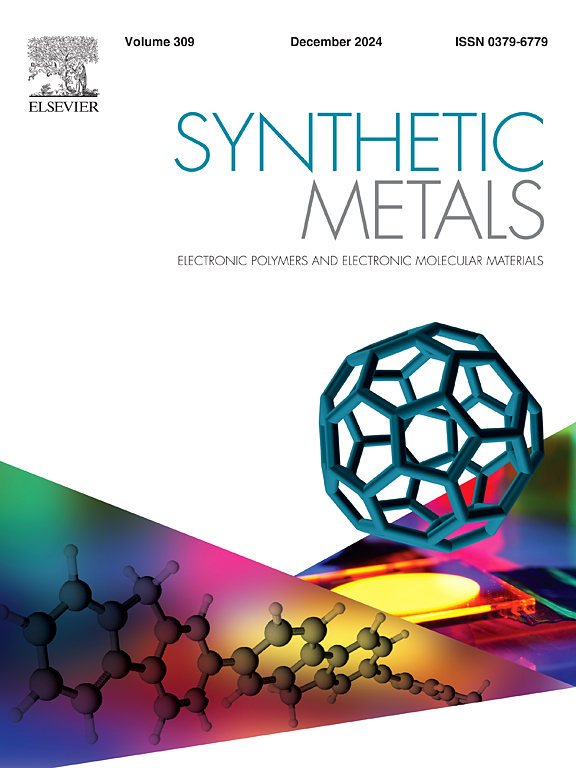Halogen-free polymer donors with regulated solution aggregation and blend morphology for efficient organic solar cells
IF 4
3区 材料科学
Q2 MATERIALS SCIENCE, MULTIDISCIPLINARY
引用次数: 0
Abstract
A reasonable matching between the donor and acceptor units that constitute a donor-acceptor polymer will effectively change the intermolecular aggregation property and its blended film morphology. Thus, based on a promising donor unit, elucidating the influence of different acceptor units on the polymer solution aggregation and photovoltaic properties is important to guide more designs of semiconductor molecules. Herein, three polymers, abbreviated as PBS-BDD, PBS-DIT and PBS-FTACz, were synthesized by alternating a donor motif of benzothiophene-substituted benzodithiophene (PBS) with acceptor skeletons of benzodithiophene-4,8-dione (BDD), triazolo[4,5-f]isoindole-5,7-dione (DIT), and fluorinated benzotriazole (FTAZ), respectively. Investigations indicated that the polymer of PBS-BDD exhibited moderate solution aggregation and more favorable film morphology to accelerate charge generation and transport. Besides, PBS-BDD showed a deeper-lying HOMO energy level and smaller optical bandgap. When the three polymers were blended with Y6 to fabricate organic solar cells, the highest power conversion efficiency (PCE) of 10.4 % was achieved for PBS-BDD. The above results disclosed the roles of BDD, DIT, and FTAZ on influencing intermolecular aggregation and energy levels, and more importantly demonstrated that excessive molecular aggregation would cause unfavorable blend morphology, even if not because of inadequate solution solubility. The insights will inspire molecular design strategies for donor polymers from a viewpoint of regulating solution aggregation property.
求助全文
约1分钟内获得全文
求助全文
来源期刊

Synthetic Metals
工程技术-材料科学:综合
CiteScore
8.30
自引率
4.50%
发文量
189
审稿时长
33 days
期刊介绍:
This journal is an international medium for the rapid publication of original research papers, short communications and subject reviews dealing with research on and applications of electronic polymers and electronic molecular materials including novel carbon architectures. These functional materials have the properties of metals, semiconductors or magnets and are distinguishable from elemental and alloy/binary metals, semiconductors and magnets.
 求助内容:
求助内容: 应助结果提醒方式:
应助结果提醒方式:


